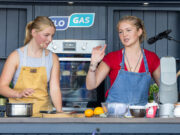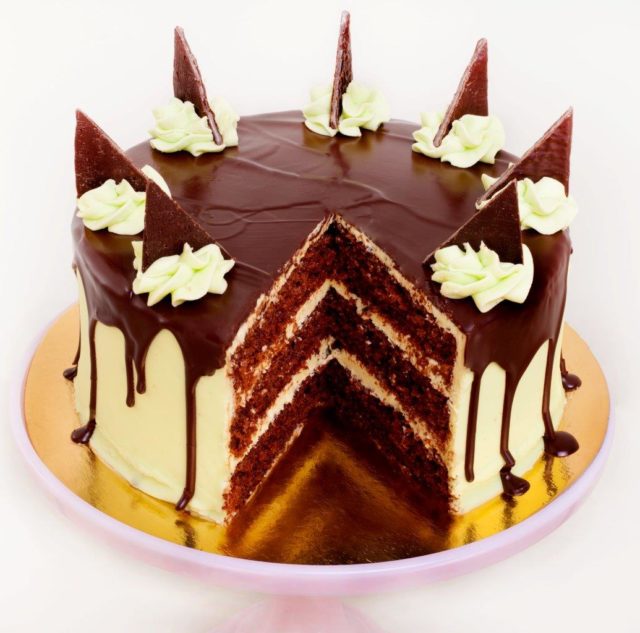Baking can be a case of trial and error. I’ve had many a baking disaster in my time. With practice you will get better and here are a few basic tips and tricks to help you along.
Preheat the oven. Before you start baking check the recipe for the correct oven temperature and turn on your oven.
Use room temperature ingredients. Leave out eggs and butter at least 1/2 hour before starting to bake to allow them to come to room temperature. Your ingredients will combine so much easier when they are all at the same temperature.
Check that baking powder is in date and active. A simple thing to overlook, stale baking powder won’t raise your cake! You can check the freshness by mixing a teaspoon of baking powder in a couple of tablespoons of water. If it fizzes up it should be OK. Be very careful measuring baking powder – too much and the cake will rise up and fall!
Use the best ingredients for the best flavour. Use real butter and free range eggs. Vanilla extract is better than vanilla essence.
Use correct measuring tools. So many recipes go wrong because the ingredients haven’t been measured or weighed properly. Buy a set of measuring spoons and a kitchen scales for exact measuring. Guessing by using a spoon from your cutlery drawer is not a good idea.
Line the cake tin correctly. There’s nothing as frustrating as a beautifully baked cake that won’t come out of the tin, or leaves half the cake behind when you turn it out. Use greaseproof or parchment paper to line the tin, or brush melted butter all over the inside of the tin and sprinkle in some sifted flour tapping the tin to cover all the butter and coat the tin, then tip out the excess.
Use the correct size tin for the recipe. Recipes have been carefully tested so use the exact tin required. Using a smaller tin will result in a deeper cake that will need longer baking, perhaps at a lower temperature. A larger tin will result in a shallower cake that will bake more quickly and could dry out.
Put the mixed cake into the oven immediately. Leaving the mixed cake to sit while waiting for the oven to heat, or putting the cake into a cold oven will affect the raising ingredients in the cake.
Do not open the oven door while the cake is baking! Opening the door before the cake is set may cause the cake to collapse as the rush of cold air rapidly reduces the oven temperature.
To test if the cake is baked see if the cake has come away from the sides of the tin and feels firm and should spring back when you press lightly on top. It should be an even golden brown colour. You can test the inside with a thin skewer. If it comes out clean, the cake is cooked. Please don’t stab the cake with a knife!
If you want to decorate a cake for a special occasion bake the day before. Cool, then wrap in clingfilm leaving it at room temperature to rest. This will firm up the sponge so it won’t fall apart when it comes to filling and decorating. You can brush the cake layers with sugar syrup for extra moistness before decorating. (sugar syrup: place equal quantities of water and sugar in a saucepan. Bring to the boil to dissolve the sugar. Add a few drops of vanilla. Leave to cool and keep in the fridge for up to 2 weeks.)
Finally, do not store a sponge cake in the fridge – unless it is a fresh cream cake. A fridge will make the cake stale quicker (the same happens to bread). Store in an airtight container at room temperature and it will be fine for 2-3 days.























